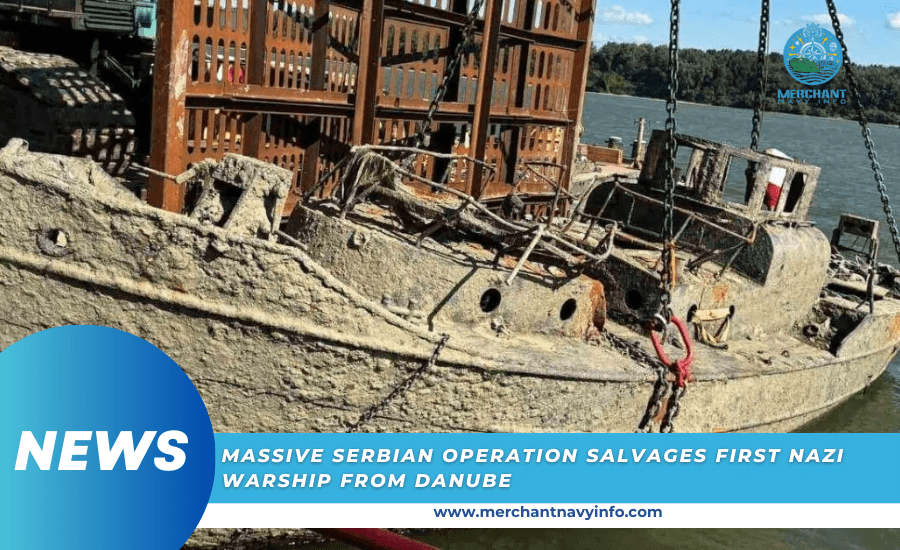
The Serbian government has launched a massive salvage operation to recover and raise a fleet of Nazi ships that sank in the Danube during the final days of World War II.
The operation aims to clear the river of dangerous debris that has threatened traffic for nearly 80 years.
Goran Vesic, Serbia’s minister of construction, transport, and infrastructure, said the initiative, which began last week, successfully rescued the first of dozens of German patrol boats.
A crane barge lifted the vessel from the river bottom, revealing intact wooden crates containing explosive munitions and other weapons.
The operation targets the remnants of the German navy’s Kampfgruppe Zieb, a fleet of 200 German patrol boats and support ships.
In August 1944, as German troops fled the approaching Red Army in Eastern Europe, the fleet commander ordered the ships to be scuttled in the Danube near Prahovo, Serbia, to prevent them from falling into Soviet hands.
The sunken portions of these ships partially blocked the Danube, temporarily tying up Soviet river troopers.
While the Soviets removed or reused some of the ships later that year, most remain submerged in the river, buried in sediment, and deteriorating over time.
Massive Serbian Operation Salvages First Nazi Warship From Danube
These wrecks continue to impede modern navigation on the Danube, especially during summer droughts and low water levels when the fleet returns to the surface.
Serbia has agreed to remove dozens of the 80-year-old wrecks from the river to maintain safe navigation.
Minister Vesic described the rescue plan as two phases: the first will salvage and remove another 21 sunken ships in the coming weeks, and the second will salvage another 80.
Each ship was carefully inspected, including removing any explosive devices on board, which took about ten days per ship.
Vesic announced that once the rescue operation is complete, the public will have a chance to see part of the underwater Nazi fleet that has made navigation difficult on this section of the Danube for the past eight years.
The salvage operation addresses the safety concerns raised by these wrecks and serves as a reminder of the historical events that led to the ships’ placement on the river bottom. Removing these vessels will make this important waterway safer for shipping.









